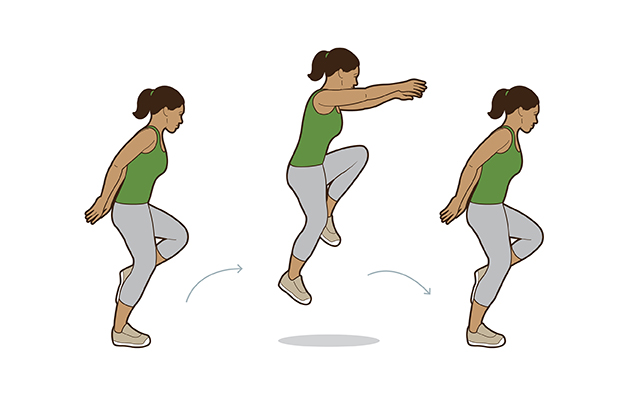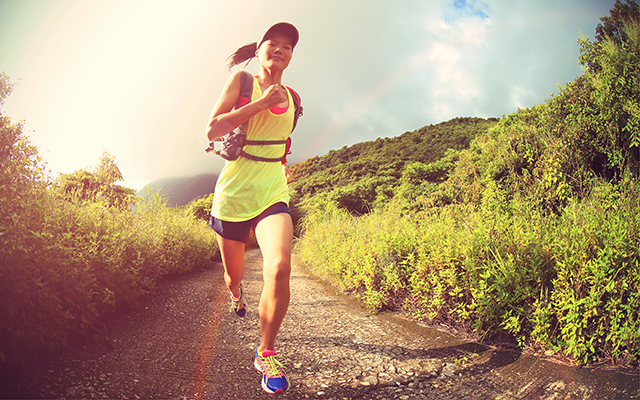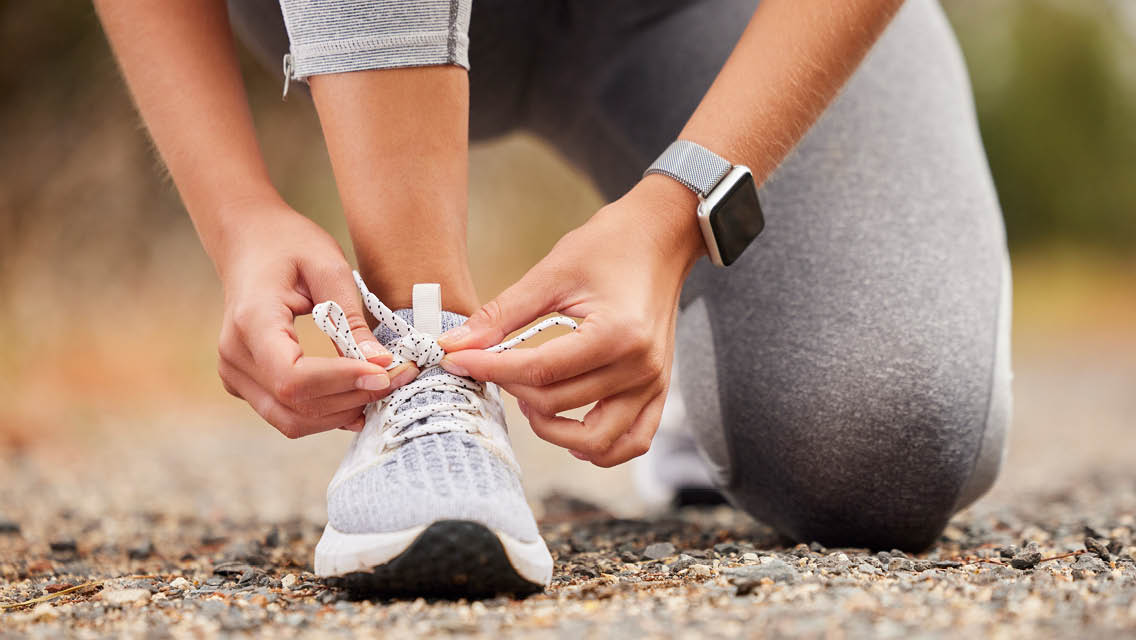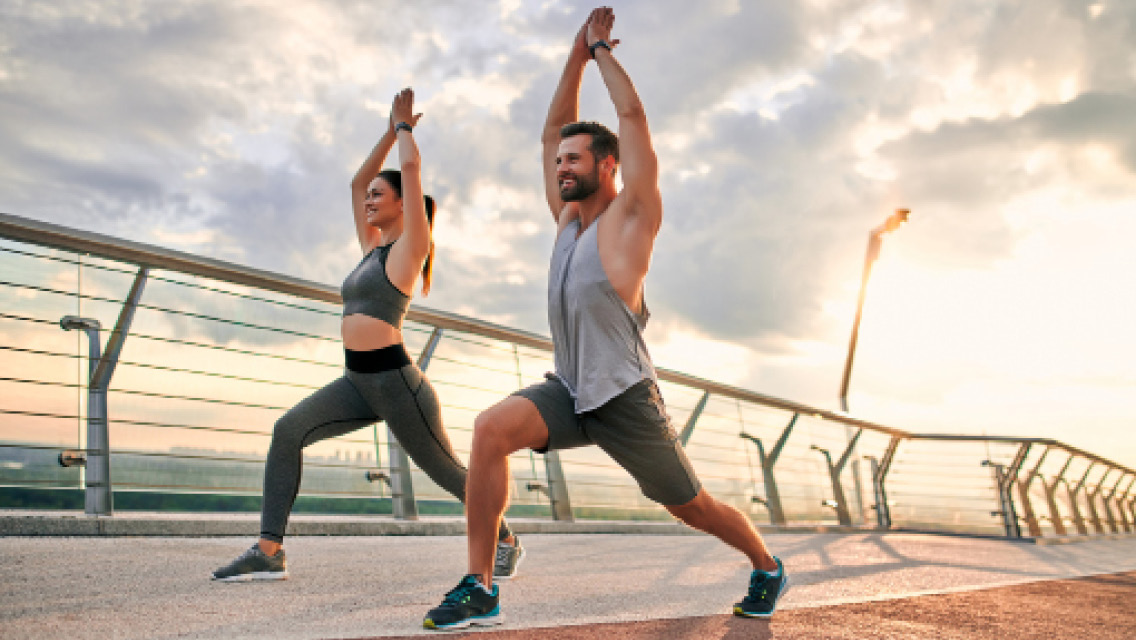Q | I’m a runner, and I’m curious if there are any exercises I can do beyond running to get faster?
A | Because we run on one leg at a time, unilateral power movements are especially effective at building speed.
“Training modalities that have the individual on one leg have a great carryover to running performance,” says Andrew Long-Middleton, a personal trainer at Life Time in St. Louis Park, Minn. Practicing unilateral power movements “will translate into a more efficient, faster runner,” he explains.
Long-Middleton recommends exercises like the Single-Leg Bound (below) for building speed. Perform five to 10 sets no more than twice per week after a warm-up.
It’s important to remember that single-leg power moves increase the force affecting your lower legs. With running and jumping, some people may experience shin pain. Take care to land softly when jumping, and periodically check in with your body by running your thumb down your shin. If you feel pain, it may be helpful to increase the recovery time between sessions and make sure your whole-foods diet is well balanced (calcium; vitamins D, K, C, and E; phosphorus; and magnesium all play vital roles in bone health). If the pain continues, see your healthcare professional.
(For more on unilateral training, check out “Taking Sides: The One-Sided Strength Workout“. Learn more about speed training at “Speed Workouts X 3“.)
Single-Leg Bound

- Standing on your right leg, swing your arms back slightly, and gently bend your standing knee to assume a single-leg athletic stance.
- Swing your arms forward for momentum and jump off your standing foot. Drive the left knee up for additional power.
- Land softly on your right foot, slightly bending your knee, while allowing your arms to swing behind you once again. The distance of the bound will vary from person to person, but aim to keep each repetition about the same length.
- Repeat the movement on the same leg without stopping until the distance between bounds shortens — or no longer than 20 seconds.
Modifying and Progressing the Single-Leg Bound
Make It Easier: Double-Leg Bound
Newer exercisers can begin with a two-legged bound to get their bodies accustomed to the stress of power movements. Perform the above move while jumping with both legs. Once you build up your comfort with the bilateral version, try the exercise on one leg.
Make It Harder: Triple-Tuck Jump
- Perform three single-leg bounds on one leg, then jump to bring that knee to your chest.
- Land softly, and immediately perform the next series of three bounds on the same leg.
- Stop when height or distance shortens, or no longer than 20 seconds. Repeat on the other leg.
Illustration by Colin Hayes




This Post Has 0 Comments